
Piper Lolot vs Betel Leaf: What’s the Difference?
Ever wondered whether the leaf in your Vietnamese grilled beef is the same as the one used in traditional betel chewing? Piper lolot (commonly known as “wild betel leaf”) and Betel leaf (Piper betle) may look similar, but they serve very different purposes. In this article, we’ll compare Piper lolot vs Betel leaf in terms of appearance, taste, and culinary use.
Quick comparison table
What is piper lolot?
What is betel leaf?
Key differences
Cultural & culinary uses
Quick comparison table (for easy skimming)
Botanical name
Leaf shape
Stem color (young)
Stem color (mature)
Taste (fresh)
Use in cuisine
Cultural role
Growing habit

Piper lolot
Piper sarmentosum
Shorter, rounder, matte
Light green
Dark green
Mild, peppery, slightly bitter
Common in grilled dishes, stir-fries, and soups
Culinary herb
Ground-spreading in shade

Betel leaf
Piper betle
Longer, narrower, glossy
Green
Purplish
Strong, pungent, slightly medicinal
Rarely used in food
Ceremonial, chewed with areca nut
Climbing vine with support
What is piper lolot?
Piper lolot (Piper sarmentosum), also known as wild betel leaf or “la lot” in Vietnamese, is a tropical herb native to Southeast Asia. It has a distinctive aroma that is highly prized in Vietnamese cuisine, commonly featured in dishes such as grilled beef wrapped in piper lolot (bo nuong la lot), stir-fried beef with piper lolot (bo xao la lot), as well as in various stir-fries and soups.
Our detailed article: Piper Lolot in Vietnam: Guide and Culinary Uses
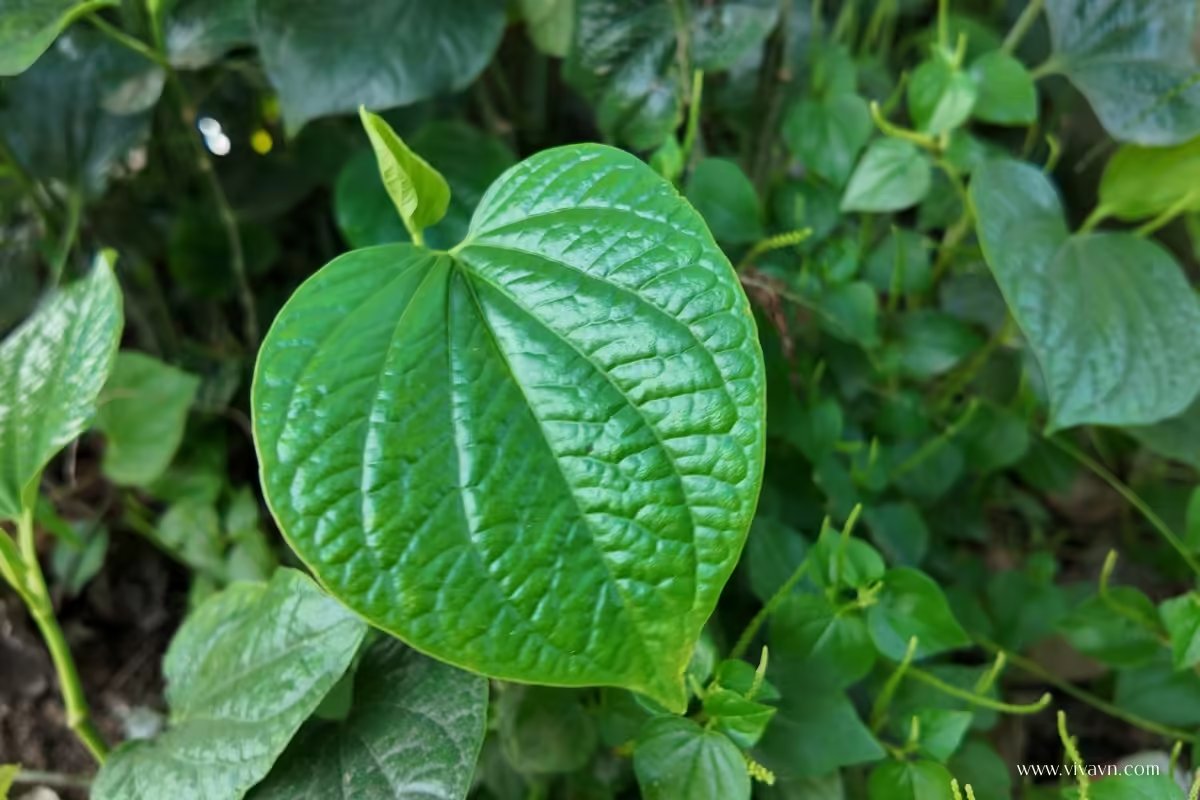
Close-up of a piper lolot leaf in a Vietnamese garden
What is betel leaf?
Betel leaf (Piper betle) is a leaf traditionally used in Vietnamese and Southeast Asian cultures. Unlike piper lolot, it’s rarely used in cooking. Instead, betel leaf plays a key role in rituals and ceremonies, often chewed with areca nut and symbolizing respect and longevity.

Close-up of a betel leaf growing fresh in a Vietnamese garden
Key differences between piper lolot and betel leaf
Appearance and growth habits
Leaves
Both piper lolot and betel leaf have a heart-shaped appearance, but there are subtle differences. The betel leaf tends to be longer and narrower, almost tapering toward the tip, while the lolot leaf is slightly shorter, wider, and more rounded, giving it a fuller, softer look overall. Both leaves are deep green in color, but the surface of the betel leaf is glossier and smoother.
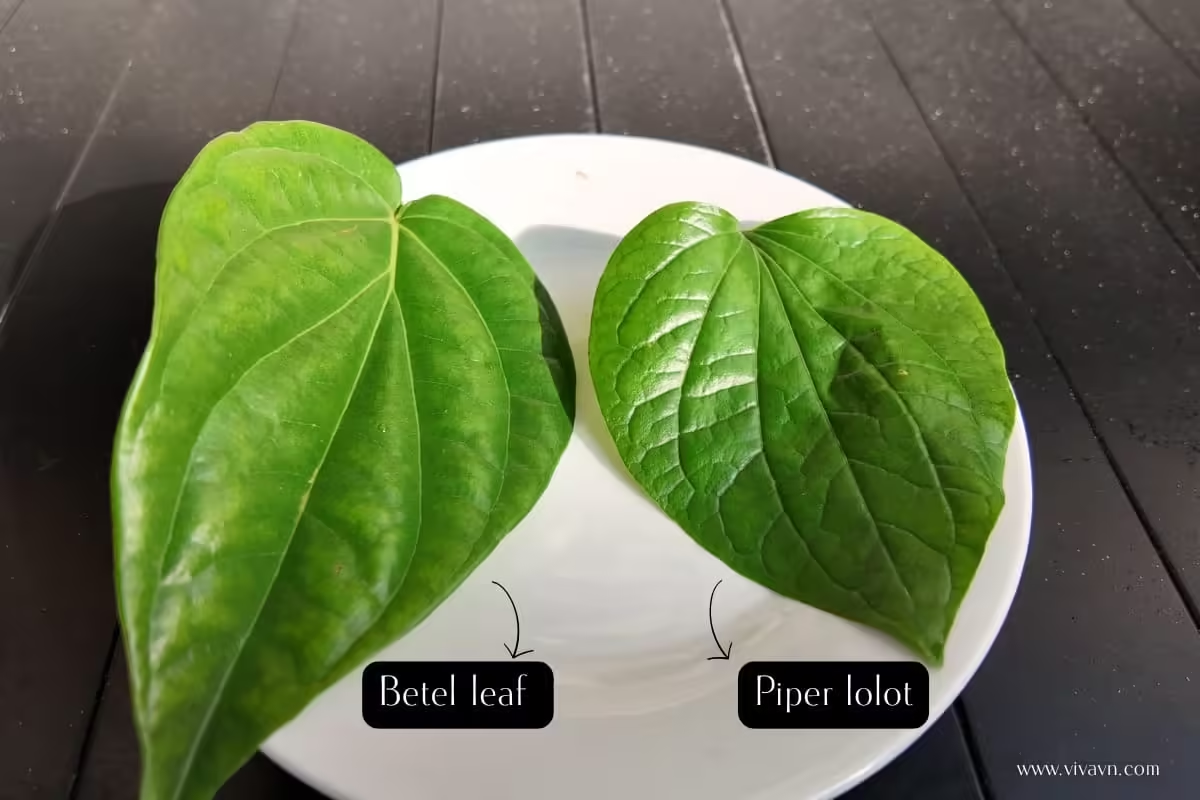
Side-by-side comparison of piper lolot and betel leaf—showing differences in shape and surface texture.
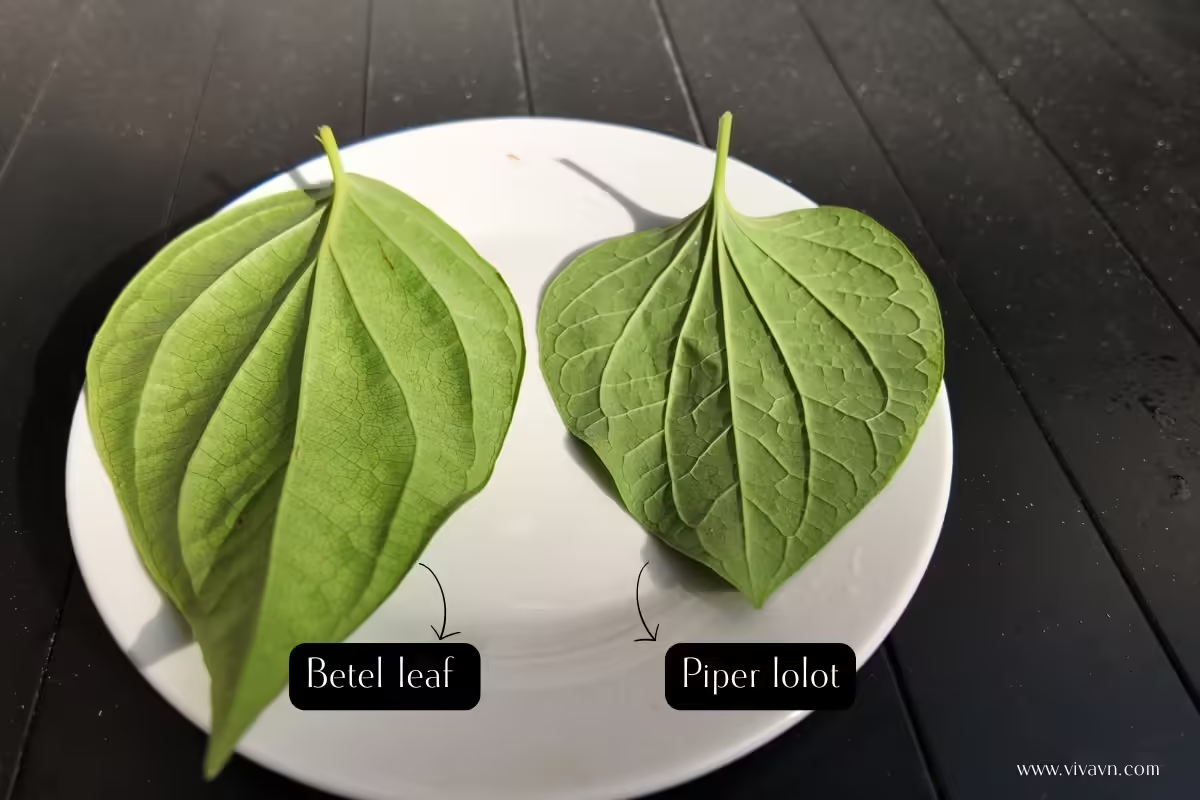
The back side of piper lolot and betel leaf
Stem comparison
Both piper lolot and betel leaf have soft, segmented stems with visible nodes. However, piper lolot stems are typically lighter green when young, turning darker green as they mature. In contrast, betel leaf stems start out green but gradually shift to a purplish hue with age.
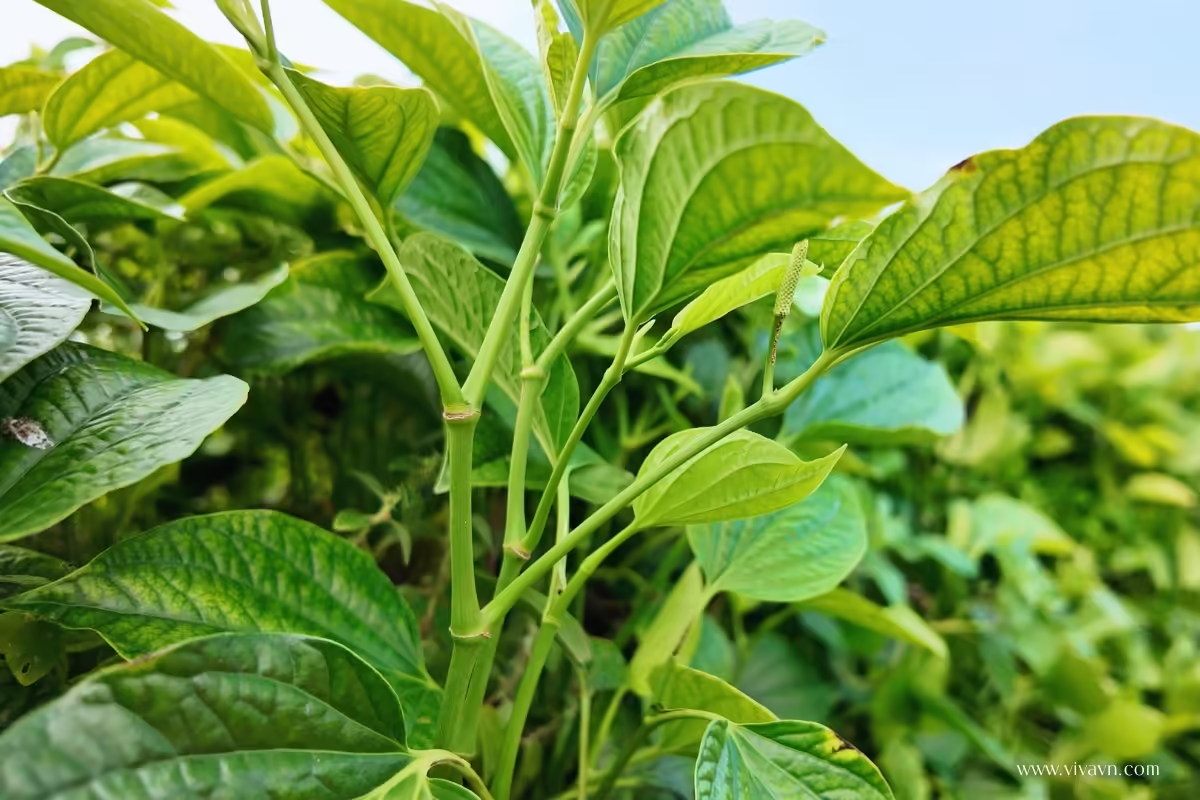
This close-up image shows the stems of piper lolot plants
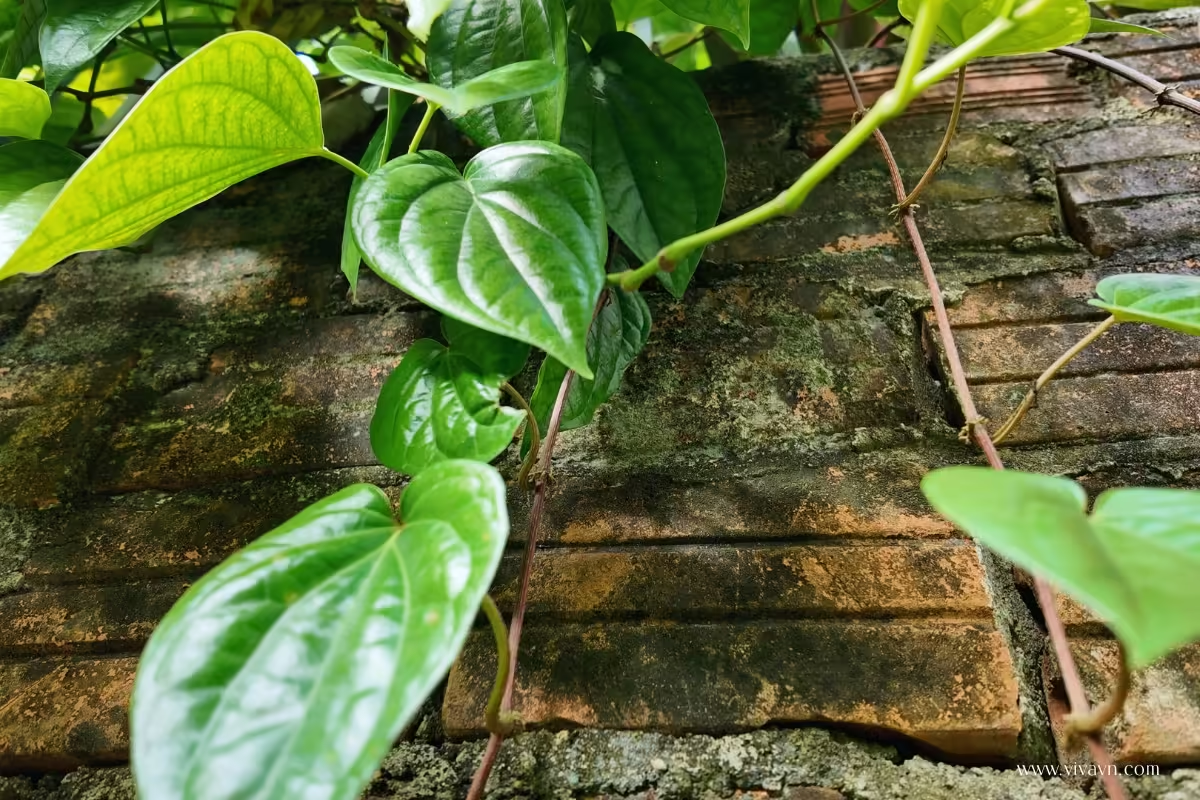
The image highlights the stems of the betel leaf plant
Growing environment:
Piper lolot prefers shady, damp environments. It grows close to the ground and thrives under the canopy of larger plants or trees, away from direct sunlight. Betel leaf, on the other hand, is a climbing vine. It grows best with vertical support—like a wall or trellis—and does well in warm, humid spots with filtered light.

Healthy piper lolot plants growing in the natural shade beneath a large tree in a Vietnamese garden.
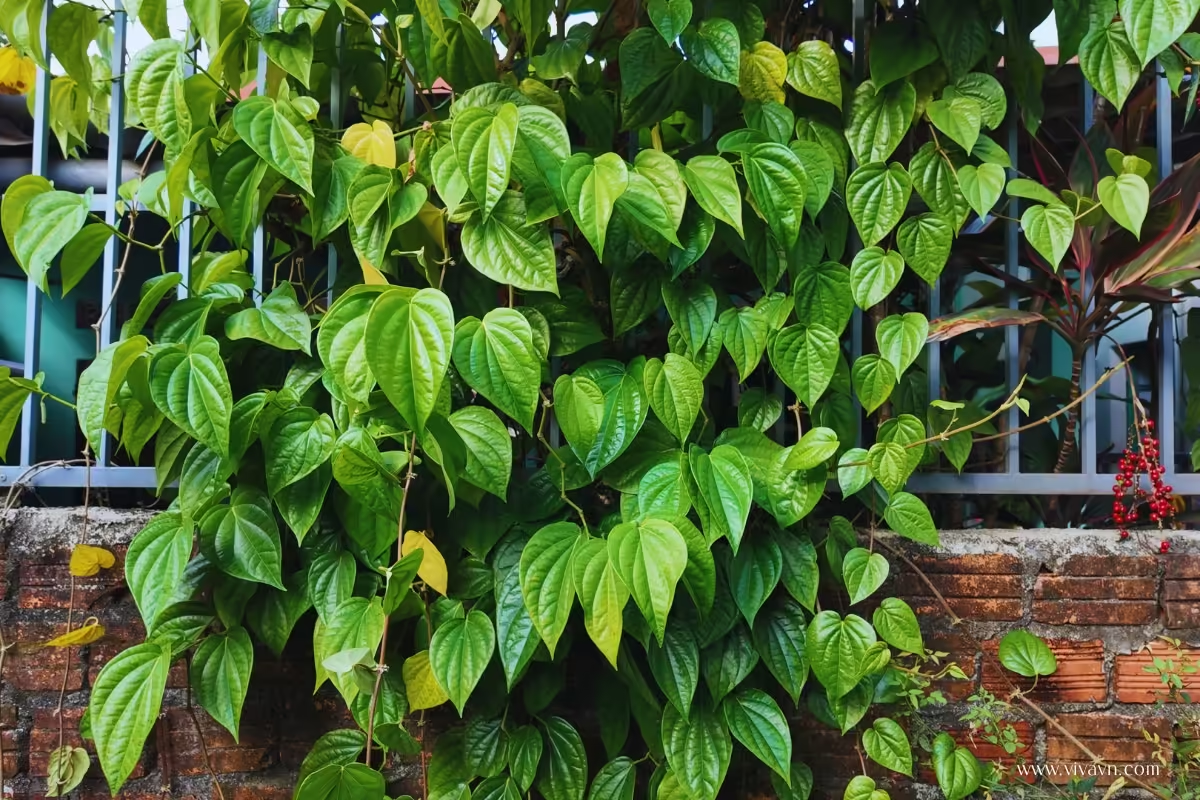
Betel leaf grows as a climbing vine and often needs vertical support
Taste and aroma
When fresh, piper lolot has a mild spiciness with a slight tingling sensation on the tongue and a hint of bitterness. Its flavor is pleasantly aromatic and never overpowering. Once added to hot dishes, its aroma deepens, becoming rich, fragrant, and savory.
Betel leaf has a bold, peppery flavor with a sharp, almost medicinal aroma. It delivers a warm, slightly spicy bite with a hint of bitterness and a pungent, herbal aftertaste that some find overpowering.
How Piper lolot and betel leaf are used in Vietnamese cuisine and culture
In Vietnam, Piper lolot (la lot) and betel leaf (la trau) are used in very different ways—one in the kitchen, the other in tradition.
Piper lolot is a beloved cooking herb in Vietnamese cuisine. Its mildly spicy, aromatic flavor makes it perfect for wrapping meats in dishes like grilled beef in lolot leaf or stir-fried beef with piper lolot. It’s also used in stir-fries and soups.
Betel leaf, on the other hand, plays a more cultural and ceremonial role. It’s rarely eaten as food, but traditionally chewed with areca nut as part of social rituals, especially among older generations. Betel leaves are also featured in wedding ceremonies and ancestral offerings, symbolizing respect, connection, and love.
Though they may look similar, their roles in Vietnamese life couldn’t be more different—one flavors the meal, the other carries meaning.
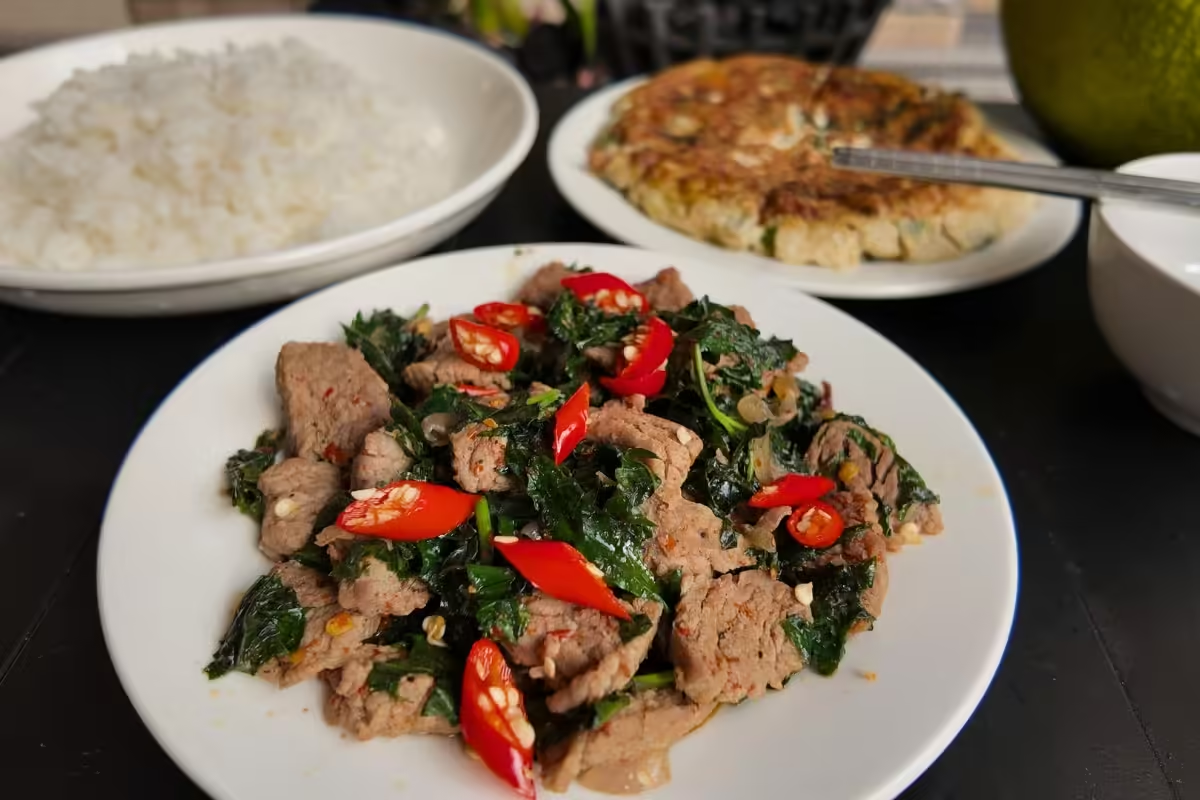
A flavorful Vietnamese stir-fry featuring tender beef and aromatic piper lolot leaves
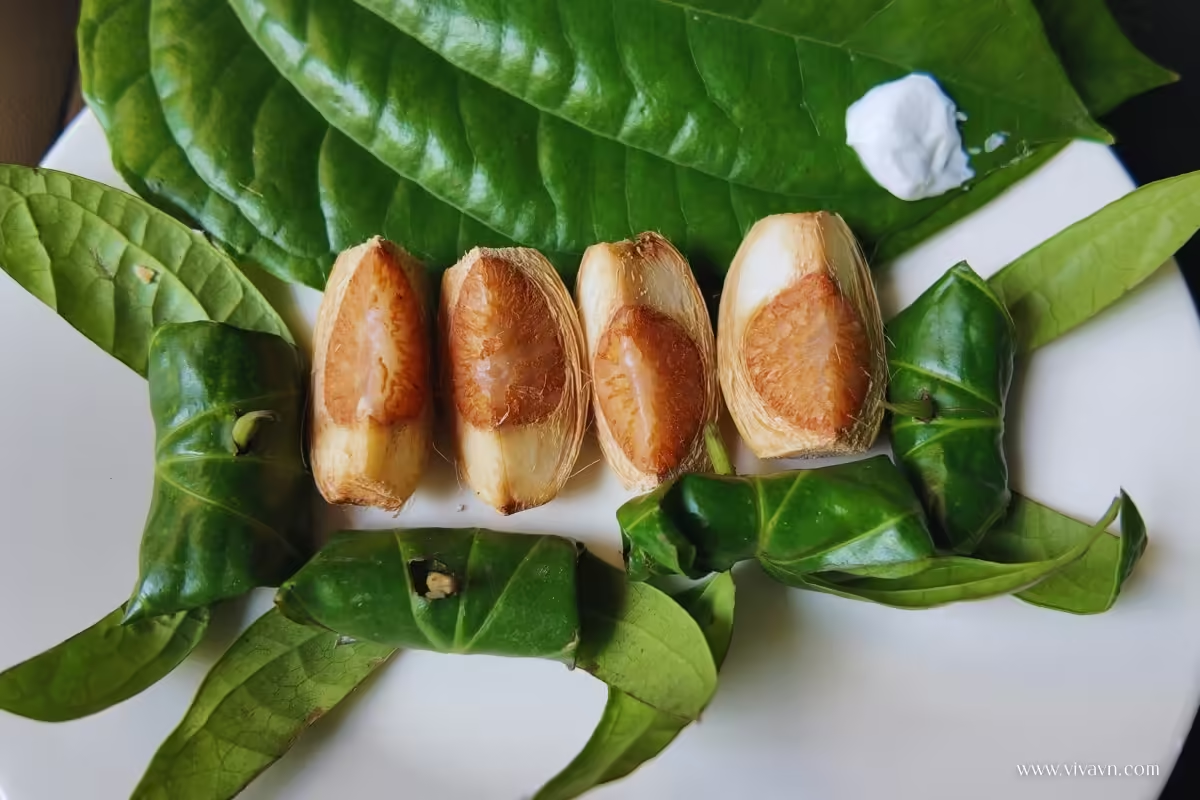
A Vietnamese set of betel leaves, areca nut, and lime paste
FAQs about piper lolot and betel leaf
Is a betel leaf the same as a lolot leaf?
No, they are not the same. While piper lolot (wild betel leaf) and betel leaf (piper betle) may look similar, they are different plants with different uses. Piper lolot is used in cooking, especially in Vietnamese dishes like grilled beef in lolot leaves. Betel leaf, on the other hand, is used in traditional ceremonies and is typically chewed with areca nut.
What does piper lolot taste like?
Piper lolot has a mild, peppery flavor with a slight bitterness and a gently aromatic aftertaste. When cooked, its fragrance deepens, giving dishes a rich, savory aroma. It’s never overpowering and pairs especially well with grilled or stir-fried meats.
Can you substitute something else for piper lolot?
While piper lolot has a unique flavor, you can try using perilla leaves (shiso) as a substitute in wrapping dishes. However, they won’t replicate the exact aroma and taste.
Share on FacebookShare on X (Twitter)Share on PinterestShare on WhatsappShare on LinkedinShare on TelegramShare on Email
- https://www.youtube.com/@VivaVNOfficial
- https://www.facebook.com/vivavnofficial2024
- https://www.pinterest.com/vivavnofficial/
© 2025 VivaVN. All rights reserved.


Leave a Reply